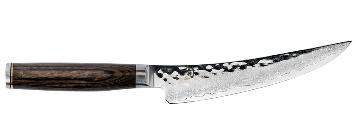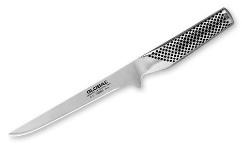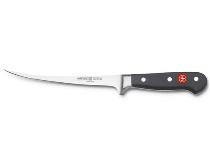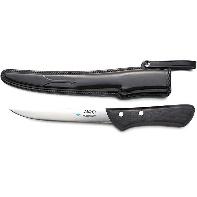Boning & Fillet Knives
Boning & Fillet Knives

Eat At Home

Do you, or someone you know, love to fish? How about hunting, or raising your own chickens? Catching or raising your own food is growing in popularity. So too are the mega stores, with their value being buying in bulk. No matter where you acquire your proteins, a boning or fillet knife will be needed to slice your way to culinary success.
Thin To Win

Throughout the centuries, removing the skin, or cutting through bones have all been part of butchering and cooking. Technological advancements in the metal used to fabricate these blades has come a long way. The factor that remains true to this day is the flexibility and thinness of the blade.
Fine Dining Starts With Preparation

When you employ the best knives, the results are also the greatest. If you enjoy fish and poultry, a fillet knife will come in handy. Slicing through beef, lamb, or pork, a boning knife will be vital. Both knives can be used interchangeably but owing both can be a huge asset down the line. Getting underneath the skin of a fish, or delicately separating lamb chops is the job of a boning or fillet knife.
The Differences & Similarities

As stated above, both the boning and fillet knives are quite similar. The slenderness of the blade for moving between cartilage and underneath skin is essential. Suppleness to perform these tasks are crucial as well. A fillet knife can be 6” to 11” long. A boning knife is typically shorter at only 5” to 6.5”. The Samoan version can reach 9.5”, so sizes can vary. Skinny and bendy is the main goal to the boning and fillet knife!

